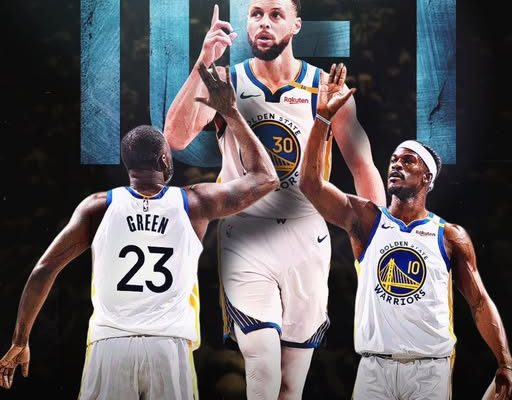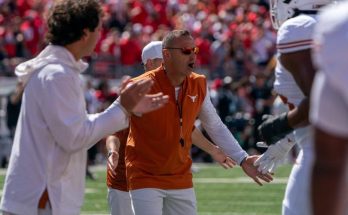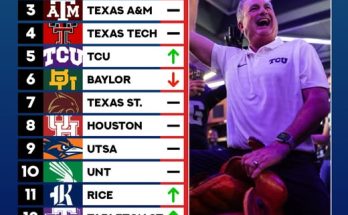When analyzing the success of the Golden State Warriors in their most recent stretch of games, particularly with Jimmy Butler on the floor, a compelling narrative begins to form around adaptability, leadership, and the fusion of two distinct basketball cultures. The Warriors, known for their run-and-gun style, ball movement, and heavy reliance on spacing and shooting, have seemingly found a new identity or perhaps added a new dimension to their play with the arrival or inclusion of Butler. Going 10-1 in their last 11 games, with a 4-1 road record and a perfect 6-0 at home during this stretch when Butler plays, suggests more than just a temporary hot streak. It reveals a level of cohesion, commitment, and strategic synergy that deserves a deeper look.
Historically, the Warriors have revolved around the trio of Stephen Curry, Klay Thompson, and Draymond Green. The dynasty’s hallmarks have included elite off-ball movement, smothering team defense, and a penchant for three-point barrages that can dismantle opponents in minutes. Yet, as the core aged and injuries mounted in recent years, questions started to bubble up around the team’s long-term viability. Would they reload or rebuild? Could they surround Steph Curry with enough help to extend their championship window?
Enter Jimmy Butler, one of the league’s most tenacious two-way stars. Known for his rugged defense, playoff heroics, and fiery leadership, Butler’s playing style is markedly different from the laissez-faire elegance that often characterizes Golden State’s offensive flow. Butler brings grit, midrange mastery, and a physically punishing approach to getting buckets—more 1990s than the analytics-driven modern game. The marriage of Butler’s intensity with Golden State’s finesse seemed questionable to some, yet the early returns suggest something closer to brilliance than confusion.
The 10-1 record, with a 6-0 home dominance, is statistically significant for a number of reasons. First, let’s consider the impact of home-court advantage. Historically, the Warriors have been dominant at Chase Center (and previously Oracle Arena), feeding off the energy of some of the most passionate fans in the NBA. Adding a player like Butler, who thrives on emotional momentum and has never shied away from the bright lights, only amplifies this advantage. His ability to close games, draw fouls, and enforce physicality down the stretch has helped the Warriors avoid the fourth-quarter collapses that plagued them earlier in the season.
Defensively, Butler’s presence has unlocked more aggressive schemes. With Draymond Green as the vocal anchor and Butler as the perimeter disruptor, Golden State’s defensive rating has climbed significantly. Opposing wings are finding it difficult to initiate offense or get comfortable in their rhythm, and that disruption is translating to fast-break opportunities. Butler’s ability to switch across multiple positions, fight through screens, and challenge elite scorers at the point of attack allows the Warriors to limit mismatches, a major issue in their previous defensive schemes.
Offensively, the adjustments have been more nuanced. Initially, some speculated whether Butler would disrupt the Warriors’ flow, given his preference for isolation sets and half-court probing. However, Steve Kerr has adapted the playbook to accommodate Butler’s strengths without abandoning the team’s identity. Curry and Thompson continue to run off screens, but now the team integrates more elbow actions and post-ups to leverage Butler’s passing and scoring from the mid-post. The result is a more balanced attack, where opponents can’t simply blitz Curry and hope to contain the Warriors. Butler becomes a release valve, someone who can get a bucket or draw contact when the offense stalls.
Moreover, Butler’s presence has revitalized some of the Warriors’ role players. Jonathan Kuminga, for example, has benefitted from Butler’s mentoring, playing with increased confidence and decision-making. Moses Moody has seen more open looks, as defenses are stretched thinner with another offensive threat on the court. Even Kevon Looney, not known for scoring, has enjoyed more putback opportunities thanks to the attention Butler commands inside. This speaks to Butler’s intangible impact—the kind of leadership that doesn’t always show up in the box score but manifests in winning habits and elevated play from others.
The road games, where the team went 4-1 during this stretch, are perhaps even more telling. Winning on the road in the NBA is tough for any team, but especially for aging rosters. The Warriors’ ability to steal road wins while incorporating a new major piece is impressive and speaks to their internal chemistry. Butler has long been known for his hard-nosed mentality and road warrior mindset. His impact on team preparation and in-game poise has stabilized the Warriors in hostile environments, giving them a psychological edge they didn’t always possess, especially in early season games.
In terms of usage rate and offensive efficiency, Butler has managed to integrate himself without hijacking possessions. His usage hovers around a manageable number that doesn’t disrupt Curry’s flow or Thompson’s shot attempts. Instead, Butler has taken on the role of facilitator in many stretches, allowing Curry to work off-ball more frequently—something the Warriors have always exploited to maximum efficiency. That tactical adjustment has opened up driving lanes and baseline cuts, creating a variety of looks that make the Warriors harder to defend.
The analytics back up Butler’s contributions. On/off metrics reveal a significant bump in net rating when Butler is on the court, particularly in clutch minutes. In close games, his decision-making, physical endurance, and psychological warfare have made a huge difference. He often takes on the opponent’s top scorer, allowing Curry to conserve energy for offense. His rebounding numbers, especially on the defensive glass, have also given the Warriors extra possessions and better transition opportunities. It’s this collection of small, winning plays that elevates a team from competitive to elite.
Importantly, Butler’s mindset fits what the Warriors needed at this stage of their trajectory. While Curry remains the heart and soul of the franchise, and Draymond the emotional engine, Butler adds another dimension—a relentless will to win that doesn’t blink in adversity. His intensity has translated into more focused practices, film sessions, and tighter rotations. The locker room culture, often praised for its balance of joy and competitiveness, has become even more mission-driven with Butler’s no-nonsense attitude rubbing off on the younger players.
Of course, it’s not all seamless. There have been moments where the offensive rhythm falters when the team leans too heavily on isolation sets. Some games have seen spacing issues when Butler, Green, and Looney share the floor—none of whom are three-point threats. However, the coaching staff has mitigated this by staggering minutes and running more creative off-ball sets to open up lanes and force defenses to rotate. Also, the team has leaned into a more physical brand of basketball, which complements Butler’s style. They’re drawing more fouls, controlling tempo, and dictating pace rather than simply reacting to opponent runs.
Another underrated aspect is the mental load that Butler takes off Curry. For years, Curry has been the primary source of offense, often needing to create his own shot in crunch time while absorbing intense defensive pressure. With Butler on the floor, that burden is shared. Curry can defer when necessary, knowing that Butler can get to the line, hit a clutch midrange jumper, or draw a double team. That shared leadership in high-stakes moments makes the team more resilient in playoff-like situations, which bodes well for postseason success.
From a team-building perspective, Butler’s arrival seems to be a calculated risk that’s paying off. The Warriors front office, often reluctant to make splashy moves outside their system, made a decisive call here. It signals that they’re not content with merely being competitive—they want to contend, and they recognize that the championship window won’t stay open forever. The team’s salary cap maneuvering, locker room adjustments, and strategic shifts all reflect a win-now mentality. In Butler, they’ve found a player whose timeline, demeanor, and skill set align perfectly with that vision.
It’s also worth noting how Butler’s off-court habits align with Golden State’s culture. Known for his discipline, early workouts, and relentless focus, Butler has meshed well with the Warriors’ development staff and veteran leadership. He’s not one to get distracted by nightlife or headlines—he’s about business. That professionalism has a trickle-down effect, encouraging younger players to emulate his work ethic and take their preparation seriously. In a league where distractions are plenty, having a locker room leader who stays on task is invaluable.
The chemistry between Butler and Steve Kerr is another component worth exploring. Kerr, a master at managing personalities and adapting systems, has embraced Butler’s unique approach. He’s allowed Jimmy to be vocal, to challenge teammates, and even to dictate the flow during key possessions. That mutual respect between player and coach can be rare, but when it exists, it often translates to deep playoff runs. Kerr has spoken openly about the importance of “basketball IQ,” and Butler fits that mold—he understands time, score, and matchup nuances like few others.
Finally, the Warriors’ upcoming schedule will test this newly found momentum. Matchups against elite Western Conference teams, back-to-backs, and road trips will determine whether this recent run is a fluke or a real turning point. Still, the early signs are promising. With Butler anchoring the defense, sharing the offensive load, and enforcing accountability, the Warriors look more complete than they have in years. It’s not just about stats or win-loss records—it’s about identity, and right now, the Warriors are shaping a new one that blends finesse with force, joy with grit, and legacy with hunger.
Whether this blend can sustain itself into the postseason remains to be seen. But for now, with a 10-1 record and Butler at the heart of it, the Golden State Warriors have found a formula that works—one that threatens to make them one of the most dangerous teams in the league once again. The road ahead is long, and the Western Conference gauntlet is unforgiving, but few teams would relish the idea of seeing Butler and the Warriors on the other side of a playoff bracket. It’s a new chapter, but one that feels just as thrilling—and possibly just as successful—as the ones that came before.



